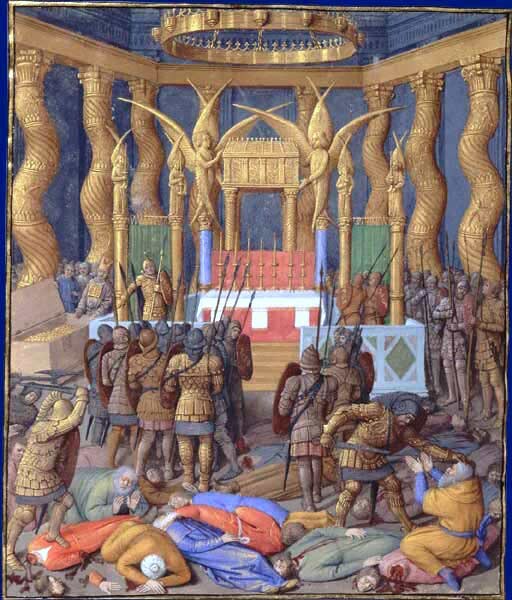Joseph of Arimathea was, according to all four canonical gospels, a Pharisee who assumed responsibility for the burial of Jesus after his crucifixion. The historical location of Arimathea is uncertain, although it has been identified with several towns. A number of stories about him developed during the Middle Ages.
14th century Byzantine Icon of the Descent from the Cross from the Church of Saint Marina in Kalopanagiotis, Cyprus. Saint Joseph of Arimathea is the figure standing in the center, in blue-green robes holding the Body of Christ.
Joseph of Arimathea by Pietro Perugino, a detail from his Lamentation over the Dead Christ.
Purported tomb of Jesus (provided by Joseph) in the Church of the Holy Sepulchre
William Blake's Illustration Joseph of Arimathea Among the Rocks of Albion in its second state after Blake's 1773 original, engraved circa 1809
The Pharisees were a Jewish social movement and a school of thought in the Levant during the time of Second Temple Judaism. After the destruction of the Second Temple in 70 AD, Pharisaic beliefs became the foundational, liturgical, and ritualistic basis for Rabbinic Judaism.
Pompey in the Temple of Jerusalem, by Jean Fouquet
Gustave Doré: Dispute between Jesus and the Pharisees
Jesus at the house of the Pharisean, by Tintoretto, Escorial







